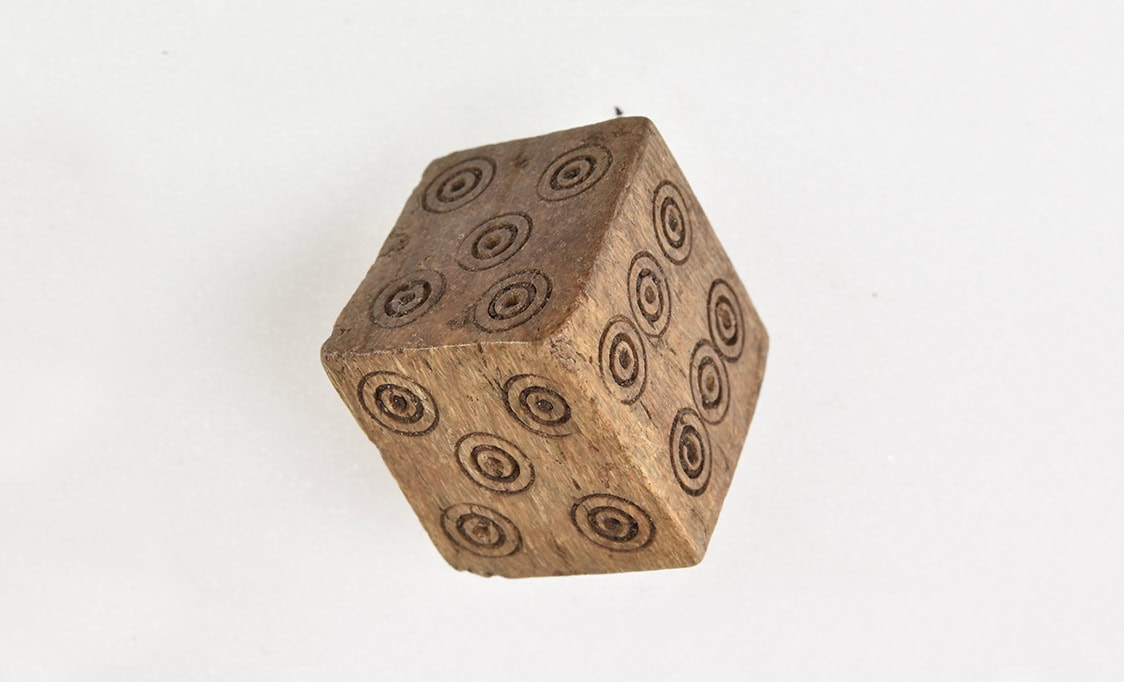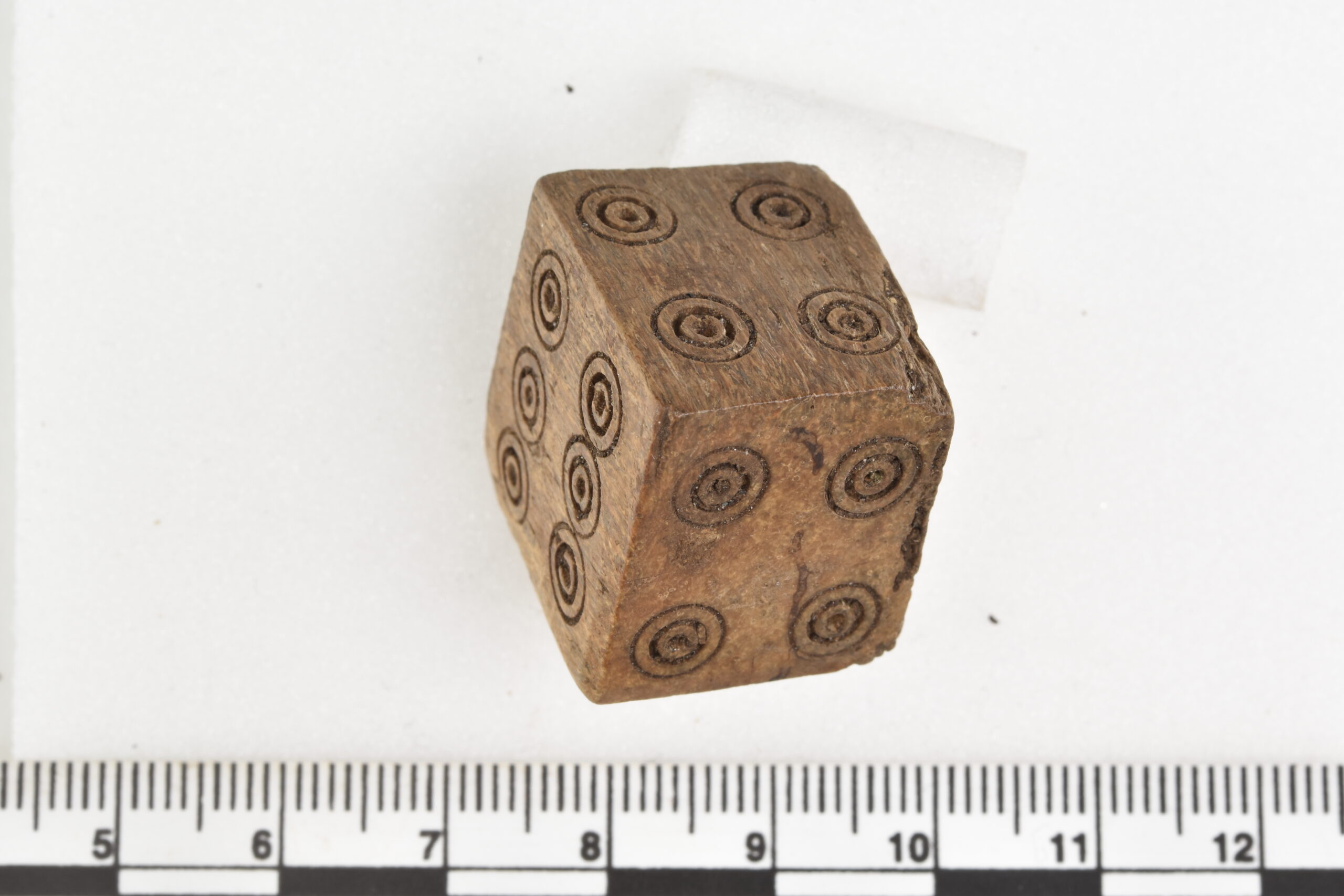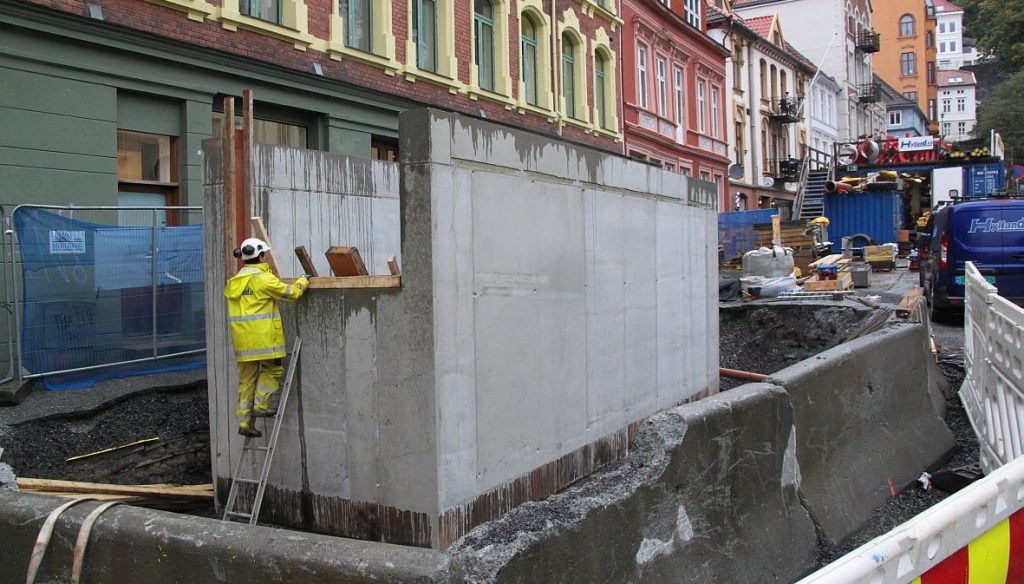
Unusual medieval dice found in Bergen
Archaeologists in Bergen recently found a dice with two fours and two fives. But who was the medieval cheat?
The rare dice was found by archaeologists from the Norwegian Institute for Cultural Heritage Research (NIKU) on one of the many excavations currently taking place in the medieval Vågsbunnen district in Bergen, Norway.
Over 30 dice from the Middle Ages have been found in Bergen over the years so the discovery of a dice in itself is not very surprising. This dice is, on the other hand, special.
The dice from Vågsbunnen has two fives and two fours, instead of the numbers one and two. It is therefore very likely that this has been used to cheat in games.
– The dice were found close to a wooden street that dates back to the 1400s. So when looking at the context and the dice design, there is just as much chance that someone has got rid of it, as they have lost it, says Per Christian Underhaug who is the project manager for the excavations in Bergen,
– This part of Bergen was a densely populated district with several inns and pubs, and it is not unlikely that there were lots of games being played in them, says Underhaug.


Ban on betting in 1276
Archaeologist Ingrid Rekkavik has written a blog post about the dice (in norwegian).
– What distinguishes dice from other medieval games is that the outcome is only determined by luck. Thus, dice are particularly suitable for betting. In fact, it appears that betting was such a big problem in Bergen in the Middle Ages that the authorities saw the need to ban it, writes Rekkavik.
According to the 1276 city law, the King’s Ombudsmen could confiscate money on the table, and in addition, all participants had to pay a fine of half a mark (about 107 grams of silver).
However, there is no reason to believe that gambling was not widespread. In the blog post, Rekkavik speculates on how a possible cheater was revealed:
– It’s exciting to imagine this dice’s last game – was the cheater revealed? If so, how was the reaction of the participants? Was there a joyful team among friends where such violations could be humorously compensated or were there a violent clash of angry betters? What happened to the dice? Was it perhaps thrown away by the nervous cheater eager to get rid of evidence? Or was it angrily thrown by an opponent, to where it ended up being found over 600 years later?
About the excavation
The excavations in Bergen are a series of small and large surveys in Vågsbunnen, one of the city’s medieval districts.
The excavations are carried out by the Norwegian Institute for Cultural Heritage Research (NIKU) on behalf of the Directorate for Cultural Heritage.

